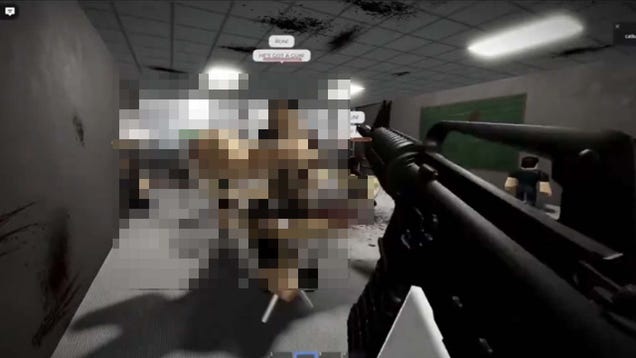
Meta Quest 3S Review
Mixed-reality games and apps make up a big chunk of the Meta Quest 3’s best content, turning your home into a boxing gym, a painter’s studio, the setting of an alien invasion, or pretty much anything else. Initially, the 128GB version of the Quest 3 dropped for a whopping $499.99 – the price of a new PS5 or Xbox Series X. But until now, there hasn’t been a cost-effective alternative, meaning the older, significantly less-powerful, and much cheaper Meta Quest 2 has remained the king of Meta’s virtual hill for most casual VR users.
It’s fair to say, then, that thanks to the newly-released Meta Quest 3S – coming in hot with the same amount of storage space wrapped neatly in a baseline $299.99 price – mixed-reality gaming is finally approachable to everyone who might have been in the market to upgrade from the Quest 2. Even with such a steep price difference, there isn’t much falloff between the Quest 3 and the Quest 3S for most potential users, aside from a handful of missing features. Most notably, the loss of the Quest 3’s pancake lenses in favor of the Quest 2’s Fresnel lenses means the 3S offers a smaller sweet spot, narrower field of vision, and lower resolution than the Quest 3. Everything else under the hood is (mostly) the same, making the Quest 3S an incredible entry-level mixed-reality headset, a reasonably-priced yet meaningful upgrade from the Quest 2, and a legitimate contender as one of the best VR headsets around.
Quest 3S – Design and Features
Sitting my Quest 3 and Quest 3S side-by-side on my desk, there aren’t a shocking number of differences between the two devices at first glance. The most immediate deviation is where the Quest 3S’s 4MP full-color passthrough cameras and tracking sensors are placed on the front of the device. Two clusters of three sensors occupy the left and right sides of the visor, which (from a functional standpoint) isn’t necessarily a better or worse layout than the 3’s vertical camera columns. Much like the Quest 3, two additional IR tracking sensors sit on the bottom left and right sides of the visor for improved controller and hand tracking.
Other than that, the Quest 3S design is mostly the same – inside and out – as any Quest 3. The Quest 3S’s singular USB-C port is accompanied by its power button, sitting on the left side of the headset while you’re wearing it. The volume buttons fit snugly on the bottom right, next to a nifty new action button that simplifies switching between passthrough and immersive modes, reminiscent of the PS VR2. One notable omission is the lack of an Aux-In jack. Still, it’s worth mentioning the Quest 3S works perfectly with my Arctis Nova 7 wireless headphones and probably has no issue working with any other USB-C or Bluetooth-based gaming headsets either. It’s also a little thicker than the Quest 3, measuring 73.9mm from the front of the device to where the facial interface connects with the lenses. At the same time, it’s much slimmer than the 93.1mm Quest 2, albeit just a little heavier at 1.13 lbs instead of 1.1 lbs.
Neither its size nor its weight makes any noticeable difference in comfort as a day-to-day VR user who has used a Quest 2 for years and is now mostly used to wearing my Quest 3 over the past year. The Quest 3S comes equipped with the same fabric Y-style-strap included in Meta’s other recent headsets, and I’ve never really enjoyed finagling with it. Even when I manage to get it to sit on my head, it tends to come loose with enough physical activity – which is a pretty frequent occurrence. Luckily, the 3S works perfectly with the off-brand Elite-style-strap I purchased for my Quest 3 for around $30, though there are much higher-quality Elite Straps available directly from Meta for $69.99, including a version with a built-in external battery pack for $129.99.
That said, battery life isn’t quite as big of a concern in the Quest 3S as in its predecessors. Its 4324 mAh internal battery is more than beefy enough to power the Quest 3’s Snapdragon XR2 Gen2 platform for more than two hours while displaying VR, AR, and MR content through its 1832 x 1920, 20ppd Fresnel lenses – the same as those found on the Quest 2. I noticed a decent improvement over what I tend to experience when using my Quest 3, which has never really been able to sustain itself longer than an hour and a half under heavy use without plugging in an external battery. Apps like PianoVision and Vermillion also tend to drain the battery faster when in MR mode, and I found that I was able to keep the 3S running for longer periods of play – typically around two full hours – than I’m typically used to.
Since the Quest 3S uses the Quest 2’s Fresnel lenses, it comes with a few of the same major problems that plagued the Quest 2. First of all, its IPD range of 58-68mm is limited compared to the Quest 3’s range of 53-75mm. That means it has a much smaller sweet spot than the latter. For some, it may be frustratingly difficult to make the 3S sit comfortably without sacrificing clarity – especially those who don’t have perfect vision. It’s also only capable of adjusting between three fixed modes, making it even tougher to fine-tune a balance between comfort and clarity. And in 2024, this just feels outdated.
The older lenses provide a comparatively limited display resolution of only 1832 x 1920, with a 96H / 90V field of view that’s still certainly good enough to make games feel immersive, but newer headsets have moved the needle quite a bit beyond this mark. Given that it lacks the crispness of the Quest 3’s pancake lenses and it has the same issues with optical distortion that the Quest 2 had, visually, it feels like a step backward after spending so much time in the Quest 3. Thankfully, the Quest 3S is equipped with the same GPU, CPU, and RAM as the Quest 3, pushing the same raw horsepower to give consistently excellent performance across 90hz and 120hz modes in both VR and full-color MR. Its inner strength is especially apparent when playing games that use a lot of computing power like Blade & Sorcery: Nomad, or moving around really quickly in fast-paced MR games like The Thrill of the Fight and Supernatural.
Purchasing Guide
The 128GB Quest 3S is now available on Amazon and the Meta website for $299.99, along with all official accessories like the previously mentioned $69.99 Elite Strap which we absolutely recommend buying. There’s also a 256GB 3S package for $399.99, and the next step up is the 512GB Meta Quest 3 which now takes the place of the old 128GB Quest 3 at $499.99.
Quest 3S – Setup and Controllers
I’ve always loved the Quest 3’s Touch Plus controllers due to their small size and the loss of their bulky tracking rings over the Quest 2 controllers. The 3S uses the same ultra-light and perfectly balanced controllers (we covered these in-depth in our Quest 3 review) with no visible deviations, though that also means they have some of the same issues with tracking that many Quest 3 owners are familiar with. It’s especially annoying when controller tracking drops when my hands move too far from the headset’s line of sight and I end up temporarily losing a virtual hand until I move my real-life hand directly in front of the sensors. These issues can usually be fixed by simply reseating the AA battery in each controller, and thanks to the sweet new button that opens the Touch Plus controller’s battery slot, it’s a lot easier to do that now than it was on the Quest 2.
Unboxing and setting up the Quest 3S is a simple matter of unfolding some cardboard and pulling out the headset, the two Touch Plus controllers, the charging cable and adapter, and a few other small things – including the physical quickstart manual and the glasses spacer if you prefer to use either of those.
Once you boot it up, you’re prompted to connect to Wi-Fi, download any necessary updates, and then get your Meta Horizon account set up and paired to the Quest 3S via the Meta Horizon app on your smartphone. Fair warning: using the Quest 3S requires that you connect it to a Meta account, which is separate from any old Facebook account and can be created in the mobile app. If you’re starting from scratch in Meta VR, you’ll also be prompted to create your own custom Meta avatar in the robust character creator. Your custom-made avatar represents you to other Meta users in virtual spaces like Meta Horizon Worlds.
Like I said before, it’s all very smooth and easy to do, and most new Quest 3S owners will likely be ready to start playing games within 15 to 25 minutes from the beginning of the setup process. I applaud how intuitive the Quest 3S’s built-in tutorials and user interface are, making it easy to fit the headset to your head, navigate the system menus, enter passthrough, set up a boundary, scan a room, download and install your first game, and so forth.
First Encounters is an especially cool tutorial experience, truly showcasing what it’s like to play a video game in your own living room as tiny alien creatures burst through what appears to be your real-life walls, hiding behind your real-life furniture. It’s short – clocking in at no more than five minutes – but it’s also a great appetizer for other mixed-reality games, and I highly recommend trying it first.
Quest 3S – Gaming Performance
Ironically, the Quest 3S’s lower display resolution compared to the Quest 3 – despite sharing the same XR2 Gen2 platform – gives the Quest 3S a notable bump in performance that’s consistent across every game and app I tried, both in standalone mode at 90 hz and when connected wirelessly to my gaming PC, using Virtual Desktop to remotely play PC VR games like Half-Life: Alyx and H3VR at 120 hz.
Full-color passthrough allows a lot of unique experiences that simply weren’t possible on the Quest 2 or in some of the other recent headsets that just don’t support it, like the PlayStation VR2. For example, being able to visualize my real-life room inside of the Quest 3S lets me play physically active games without worrying about tripping over a pet. Or, I can expand my play area to include other areas of my home by scanning physical rooms into the Quest 3S’s memory. Boundaries no longer need to be completely free of physical objects; those can get scanned in and their geometry may even be outlined and replaced with props or points of interest within certain games. For example, Drop Dead: The Cabin treats my real-life doors and windows as points of entry for the imposing zombie horde to invade my home.
Not only are mixed-reality games able to convert unconventional living areas into virtual arenas thanks to the Quest 3S’s 4MP sensors, but you can also simply switch between the real world and the virtual world at the tap of a button without removing the headset – for instance, to answer your partner calling you to go take out the trash or when it’s time to pour a cup of tea. It’s great that when the task at hand is complete, you can simply step back into your play area and continue your game like nothing happened.
Sticking to 90 hz in standalone mode ensures a seamless, snappy experience in any VR game you throw at the Quest 3S. I tried Meta Horizon Worlds, Asgard’s Wrath 2, Pavlov Shack, Dungeons of Eternity, Ghosts of Tabor, Powerwash Simulator VR, Walkabout Mini Golf, Blade & Sorcery: Nomad, Demeo, Windlands 2, and several other games… and the Quest 3S devoured everything I launched at it. It was even able to sustain consistently smooth frames in most cases while recording 1080p gameplay footage at 60 frames per second.








